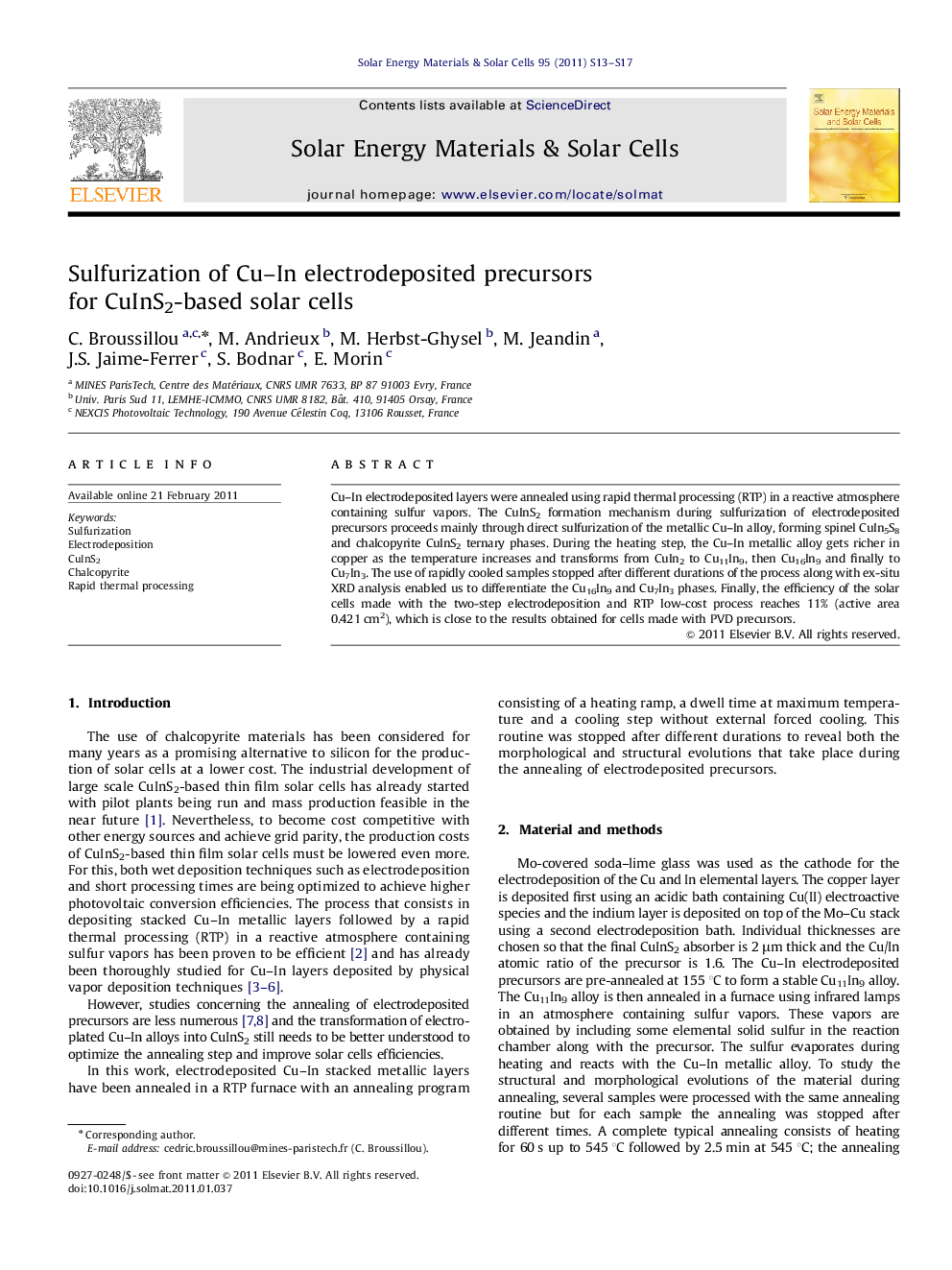| Article ID | Journal | Published Year | Pages | File Type |
|---|---|---|---|---|
| 79381 | Solar Energy Materials and Solar Cells | 2011 | 5 Pages |
Cu–In electrodeposited layers were annealed using rapid thermal processing (RTP) in a reactive atmosphere containing sulfur vapors. The CuInS2 formation mechanism during sulfurization of electrodeposited precursors proceeds mainly through direct sulfurization of the metallic Cu–In alloy, forming spinel CuIn5S8 and chalcopyrite CuInS2 ternary phases. During the heating step, the Cu–In metallic alloy gets richer in copper as the temperature increases and transforms from CuIn2 to Cu11In9, then Cu16In9 and finally to Cu7In3. The use of rapidly cooled samples stopped after different durations of the process along with ex-situ XRD analysis enabled us to differentiate the Cu16In9 and Cu7In3 phases. Finally, the efficiency of the solar cells made with the two-step electrodeposition and RTP low-cost process reaches 11% (active area 0.421 cm2), which is close to the results obtained for cells made with PVD precursors.
Graphical abstractFigure optionsDownload full-size imageDownload as PowerPoint slideResearch highlights► CuInS2 cells up to 11.0% efficiency using electrodeposited metallic precursors. ► Metallic phases evolution from Cu16In9 to Cu7In3 during CuInS2 formation. ► Phase evolution during annealing independent of the process used for precursor deposition. ► Efficient CuInS2 modules can be made with low-cost electrodeposition step.
